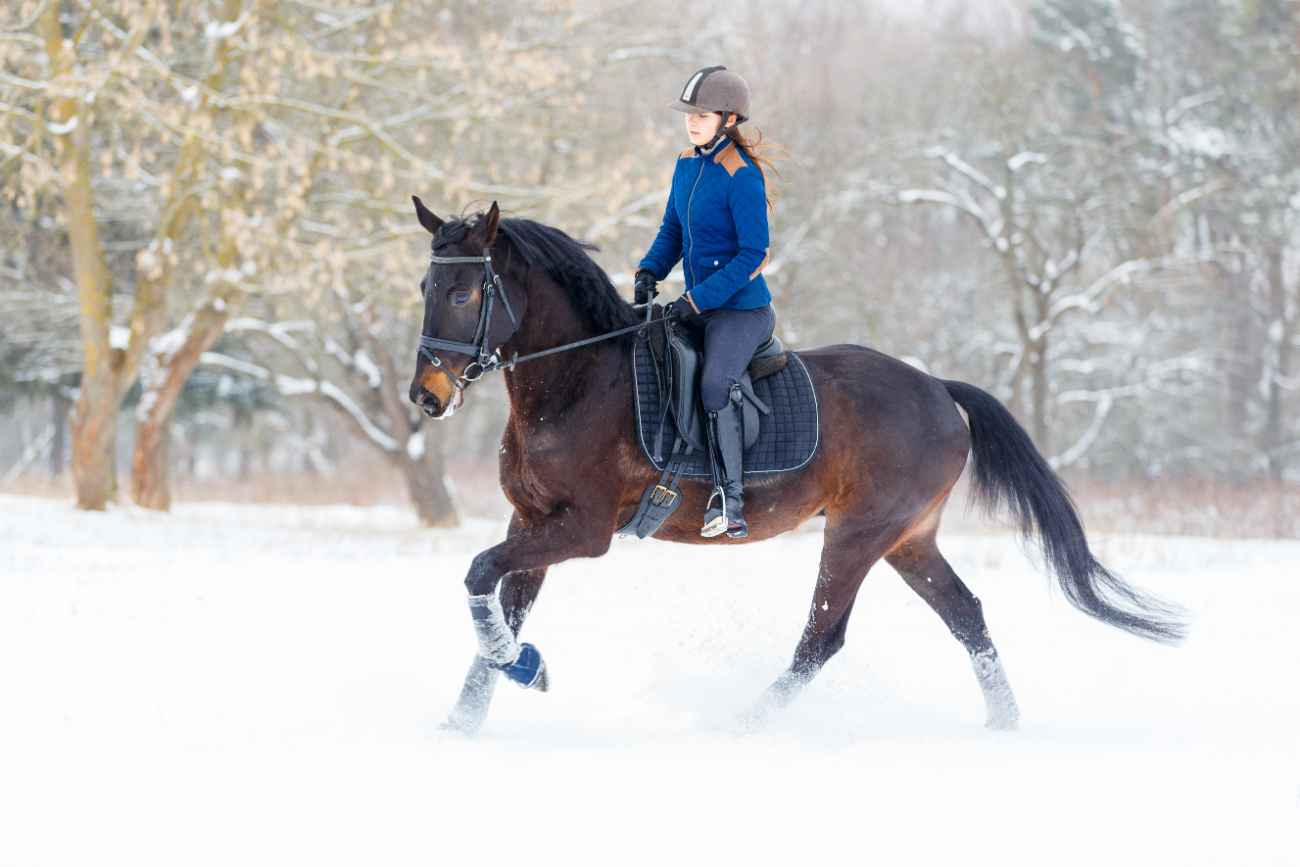How Winter Weather Impacts Saddle Fit What Every Rider Should Know

Introduction
Many equestrians dread the arrival of winter, a period full of unique hurdles such as muddy fields, frozen water troughs and fresh horses. As riders, we go to great lengths to adapt to the challenges this season brings about, altering our horse’s routine and ridden schedule to combat the effects of the coldest months of the year.
But not nearly as many riders are aware of how the wintertime can affect the fit of their horse’s saddle. It is not surprising that the changes we make to keep our equines warm and happy during the winter may unintentionally affect the fit of their tack. It doesn’t take long for a horse to lose weight or muscle mass, which is why in a short period of time, their conformation can significantly change. While this isn’t necessarily something to worry about, it’s certainly helpful to be aware of. After all, it is widely agreed that a correctly fitting saddle is one of the most fundamental aspects of riding, ensuring that your horse is comfortable, has freedom of movement and the ability to develop their muscles correctly. Anything that could potentially jeopardise this should be closely monitored.
How Can Winter Actually Affect Saddle Fit?
Several factors may contribute to horses changing shape throughout the winter months, including:
- Limited Grazing – A universal struggle for most equestrians when the weather turns is grazing. Grass stops growing, fields become boggy, and it can be difficult to monitor exactly how much nutrition your horse is getting.
- Changing Levels of Exercise – Many equestrians will alter their typical riding routine during the depths of winter. Whether it’s an increase in exercise to manage a potentially fresh horse or a decrease in activity due to limited daylight hours, both can affect muscle development and, consequently, saddle fit.
- Cold Weather – When temperatures plummet, it can disrupt plans. Frozen arenas and icy roads can force unintended interruptions to a horse’s exercise regime, causing their muscle to drop off.
- A Different Routine – As previously mentioned, unpredictable weather often forces owners to adapt their plans to keep their horses comfortable. However, not all equines cope well with these changes; for many, it can cause stress. Stress is a contributing factor to weight fluctuations and can result in a loss of appetite, increased sweating (which, in turn, causes dehydration), digestive problems such as ulcers, and even hormonal imbalances. The amount of time a horse spends in the stable often increases during the winter months, this can significantly alter their diet and subsequently, their weight.
So, What Can You Do to Help?
Now that we understand why a horse’s saddle fit might change during the winter months, it’s important to know that there are steps we can take to address this.
The first thing that equestrians can do is keep a close eye on any feeding and weight-related changes that they observe. For example, if your horse loses their appetite or your grass coverage becomes sparse, noting these changes down can help you to manage the situation. A good, objective way to monitor this is by tracking their Body Condition Score.
Additionally, it is good to have a regular check-in with a fresh set of eyes! Sometimes, it’s difficult to spot subtle changes in your horse when you’re around them all the time. A saddle fitter can offer valuable insights and a fresh perspective, assessing how any shifts in muscle development or conformation might affect the fit of the saddle.
Most importantly, there is no need to panic if change does occur! It is totally normal and GFS saddles are designed with this in mind. Our products are fitted with an X-change gullet system, meaning that as your horse changes shape and size, you don’t have to worry about buying an entirely new saddle. Instead, your saddle fitter can simply alter the width of the gullet that you wish to insert into the front gusset accordingly.
As the effects of winter set in, be sure to make an appointment with your saddle fitter to check that your horse’s tack is still fitting comfortably.

